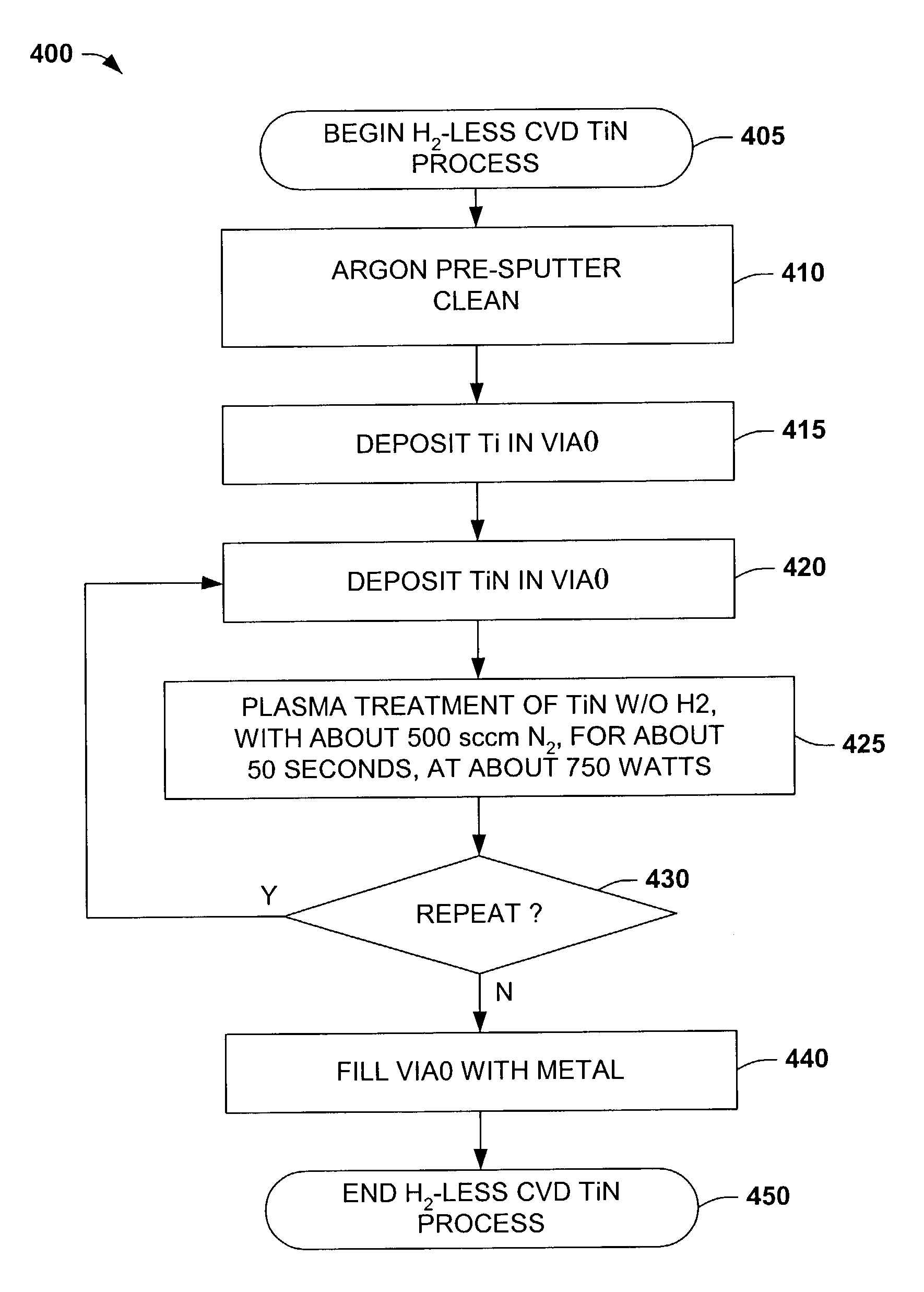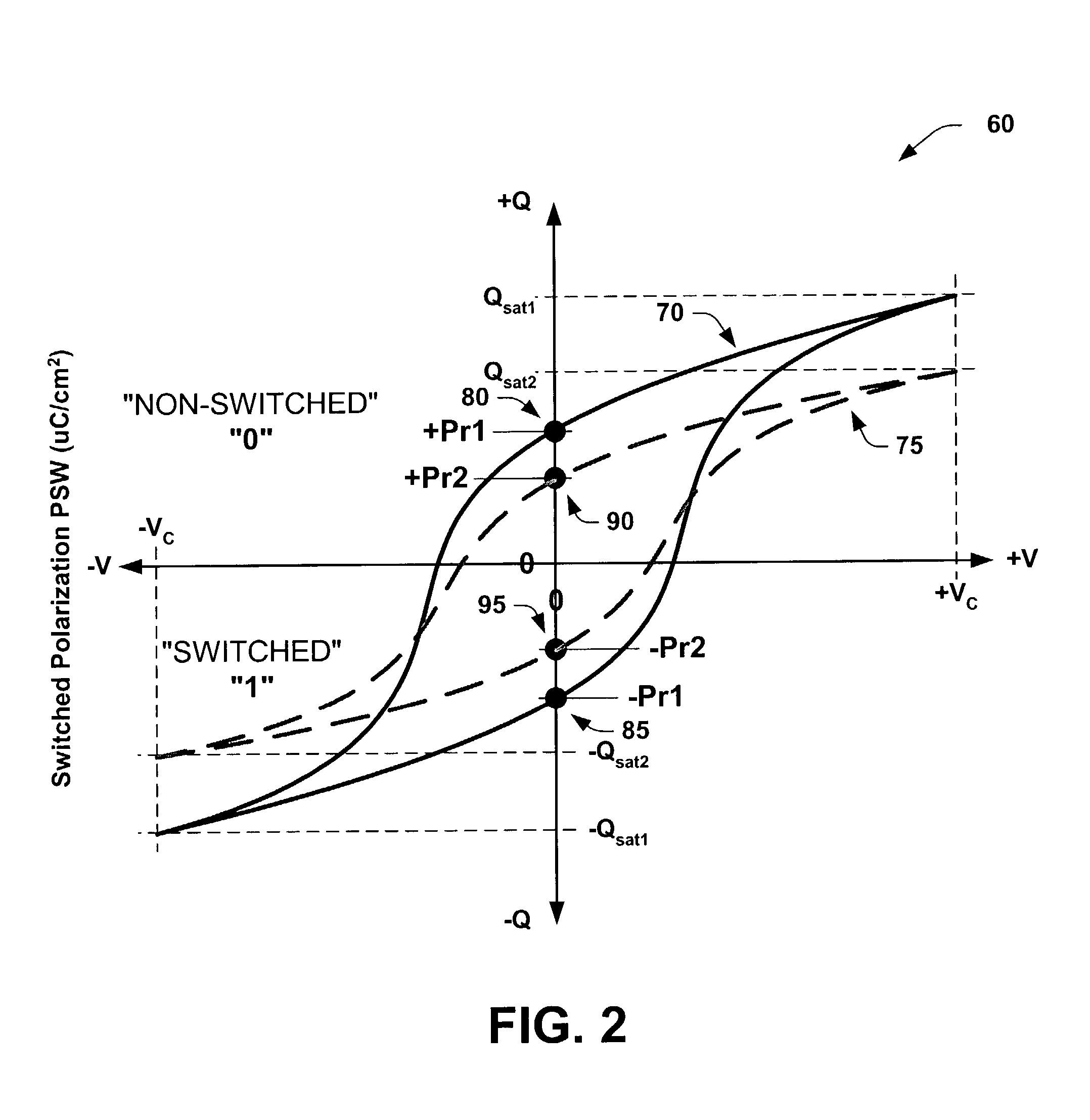Hydrogen-less CVD TiN process for FeRAM VIA0 barrier application
a tin and feram technology, applied in the field of integrated circuit processing, can solve the problems of reducing the application range of polarization hysteresis characteristics, requiring more computational power and on-chip memory of personal devices, and preventing exposure of them
- Summary
- Abstract
- Description
- Claims
- Application Information
AI Technical Summary
Benefits of technology
Problems solved by technology
Method used
Image
Examples
Embodiment Construction
[0037]The present invention will now be described with respect to the accompanying drawings in which like numbered elements represent like parts. While the following description of the present invention relates to a method of formation and the plasma treatment of a TiN diffusion barrier layer used in association with a ferroelectric capacitor and other such FeRAM devices, the instant invention can be used to form and treat a TiN film. In particular, the improved performance of the FeRAM device of the instant invention compared to standard semiconductor memories appears to make FeRAM the memory of choice for devices that require low power and a large degree of device integration.
[0038]The figures provided herewith and the accompanying descriptions of the figures are provided merely for illustrative purposes. Based on the instant description, other devices and structures are anticipated according to the formation and treatment methods illustrated in the figures and in the following de...
PUM
| Property | Measurement | Unit |
|---|---|---|
| Temperature | aaaaa | aaaaa |
| Time | aaaaa | aaaaa |
| Power | aaaaa | aaaaa |
Abstract
Description
Claims
Application Information
 Login to View More
Login to View More - R&D
- Intellectual Property
- Life Sciences
- Materials
- Tech Scout
- Unparalleled Data Quality
- Higher Quality Content
- 60% Fewer Hallucinations
Browse by: Latest US Patents, China's latest patents, Technical Efficacy Thesaurus, Application Domain, Technology Topic, Popular Technical Reports.
© 2025 PatSnap. All rights reserved.Legal|Privacy policy|Modern Slavery Act Transparency Statement|Sitemap|About US| Contact US: help@patsnap.com



